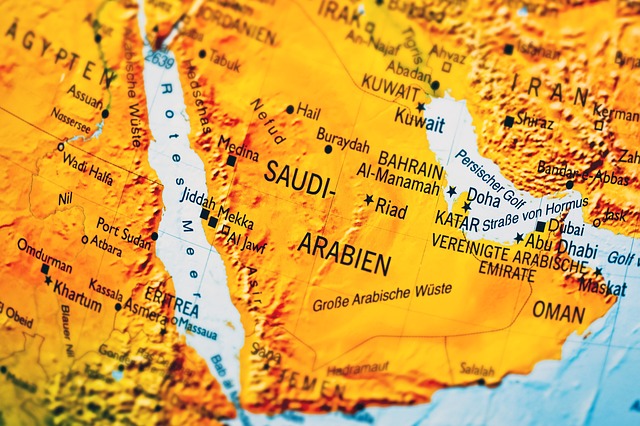by Anthony Dipaola, Bloomberg
Around the world, high oil prices tend to accelerate the shift to renewable energy and electric vehicles. In Saudi Arabia, they have the opposite effect. Over the past six years, the Saudis have announced investments of more than $350 billion aimed at making the sun-drenched kingdom the, well, Saudi Arabia of renewable energy.
But virtually no construction has begun, and with crude more than doubling from early 2016 to this October, the Saudis’ commitment to renewable energy has wavered, says Fatih Birol, executive director of the International Energy Agency. “There has been a lot of stop and go,” Birol says. “There’s a need to increase electricity generation, decrease oil-based power, and make use of the huge solar potential.”
In 2012, the Kingdom introduced a $109 billion solar program intended to generate a third of its electricity from renewable energy by 2032. Two years ago, Crown Prince Mohammed bin Salman announced a plan to wean the kingdom from its dependency on oil exports by building 210 gigawatts of solar capacity, or more than 20 percent of today’s worldwide renewable energy output.
Last year, the government said that by 2023 the country can generate 10 percent of its power from solar and wind plants, at a projected cost of $50 billion. And in March, the crown prince announced a $200 billion agreement with Japan’s SoftBank Group Corp. to build enough solar capacity to triple the kingdom’s current electric output.
The crown prince insists the renewable energy initiative is still on, and in October he told Bloomberg he expects 4 gigawatts of solar capacity by 2021, about 5 percent of the country’s electrical output. “We have finalized the structure of the solar investment,” the crown prince said. Construction will begin “somewhere around mid-2019.”
On paper, at least, the Saudis’ ambitions make sense. The kingdom is bathed in sunlight, with fewer than 45 cloudy days per year on average. Blanketing the country’s vast empty spaces with solar panels could theoretically generate power equivalent to the Saudis’ proven oil reserves of 266 million barrels in just two years.
But the Saudis today get three-fifths of their electricity from oil, burning as much as 1 million barrels of crude per day in power plants—which makes sense only if you’re unconcerned about climate change and you’re not paying market prices.
“The economy’s growing, the population’s growing, you need more air conditioning, you need more desalination,” says Roberto De Diego Arozamena, who retired in October as chief executive officer of Abdul Latif Jameel Energy, part of a Jeddah conglomerate that builds power and desalination plants. “I don’t think they have a choice” in embracing renewables.
When oil headed for a low of $27.88 per barrel in 2016, the national budget swung from a surplus of $104 billion in 2015 to a deficit of $83 billion in 2016, giving the solar push greater urgency. As oil prices rebounded, the motivation to install solar farms waned. And global interest in cooperation with the Saudis took a further hit in October after the murder of Washington Post columnist Jamal Khashoggi at the Saudi consulate in Istanbul.
The government denies reports that the agreement with SoftBank has been delayed or even canceled, but little has been done to build any of the promised projects. With oil prices off by about 30 percent since their October peak, the Saudis today have greater incentive to push ahead with their solar plans. But they’re still about double their 2016 trough, so the situation isn’t as urgent as it was a couple of years ago.
Using solar to produce a third of the country’s electricity would free up some 300,000 barrels of oil per day, output that could fetch $8 billion annually if sold abroad. And without renewables, the kingdom could become a net oil importer by 2038, according to researchers at British research group Chatham House.
Despite the apparent logic of shifting away from fossil fuels, the scant headway on solar has investors questioning whether the Saudis are really committed to their ambitious program, says Jessica Obeid, a resident fellow at Chatham House. “Saudi Arabia has made a lot of splendid plans,” she says. “But it has yet to execute any of them.”
One solar project was awarded to Riyadh-based Acwa Power a year ago, though little progress has been made at the site, a stretch of red sand dunes in the region of Al Jouf, 600 miles northwest of capital. Acwa faced delays in getting approval for using the land, but says construction on the $300-million facility started in November and that it will be operational next year.
Nawaz Peerbocus, head of energy transitions at the King Abdullah Petroleum Studies and Research Center in Riyadh, says the ups and downs are only natural, and that the country remains committed to renewable energy—just at its own pace. As technologies develop and priorities evolve, the Saudis have fine-tuned their plans, but “in terms of where they want to be in 2030 and beyond, that’s very clear,” he says. “It’s visionary, but like many visions, sometimes you aim high and adjust your expectations given how world is changing.”





